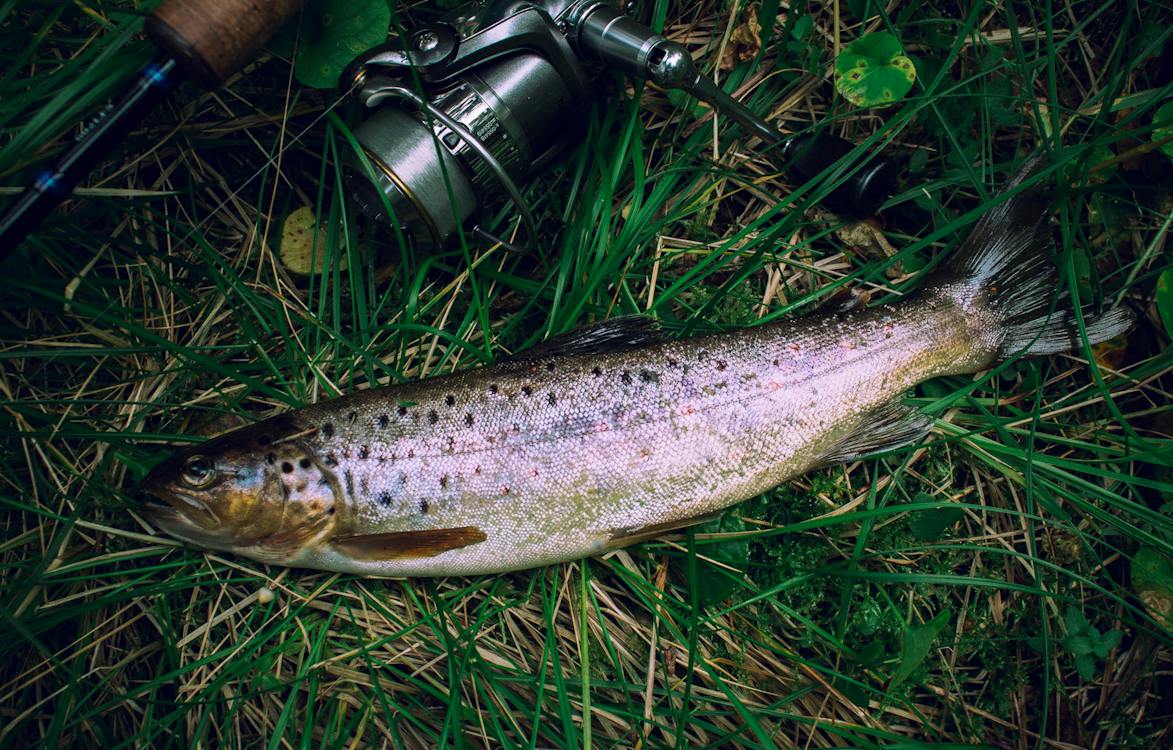Sometimes, the physical differences between fish of the same species can be so glaring that even with an untrained eye, you’d be able to tell them apart. Other times, the dissimilarities are so minor that even experienced anglers may mistake one species for the other.
Newbie anglers are particularly curious about the differences between the brook trout and the speckled trout. Some say they’re exactly the same, while others argue they aren’t. So, which is it? Perhaps a little bit of both? Read on to find out.
Facts About the Brook or Speckled Trout
Let’s clear the air for you early on. Yes, the brook and speckled trout are one and the same species, except for slight differences that may or may not be inconsequential to you. But we’ll get to that later. For now, let’s focus on the species’ general characteristics.
Physical Traits
The back portion of the fish can be either brown, olive-green, or black, while its belly can be white or silvery. It has light, wormlike spots and markings all over its body that may appear red or blue in color. On its lower fins is a white leading edge set off by a black line. Finally, it has a square-like tail and a mouth that extends far back behind its eyes.
Sizewise, the brook trout is perfect for beginner anglers. It measures six to 16 inches in length and weighs between one and three pounds.
Location
Speckled or brook trouts are commonly found in the ponds, lakes, and greater rivers of North Ontario and small brooks down South.
Brook or speckled trout are usually found where there’s a year-long supply of clear, cold water. You’ll find them in streams with quiet, cool pools between fast water rapids, beaver ponds, and cold, clear lakes. Their ideal habitat is where there are plenty of rocks, logs, and overhanging tree branches.
Fishing for Brook Trout or Speckled Trout
Here are some important tips to keep in mind when fishing for this type of freshwater fish.
- Fish during spring or fall if you’re fishing in an inland lake since this is when the species is most active.
- Brook trout in rivers usually frequent cool pools at the ends of rapids and falls during the summertime. They start to spread out more during spring and fall.
- Look for brook trout near overhanging trees, rocky points, shoals, and submerged wood.
- When fishing during the high-water period, you’d find worms and natural baits to be more effective.
- When fishing during higher water temperature, use a fly rod and flies since these will help you catch trout better as they move from the deeper pools into riffles.
- A spinning reel that holds a four-pound test line combined with a light-action rod is the best combo for these types of excursions.
- The best baits for the brook trout are the following: spoons, jigs, spinners, minnow-imitating plugs, artificial flies, leeches, insects, minnows, and worms.
The Difference Between the Brook Trout and Speckled Trout
To some anglers, the brook and speckled trout may be one and the same species, but to others, they are an entirely separate species or subspecies. Here’s why.
1. Geography
In the USA, people refer to the native Northern species as the brook trout and the native Southern species as speckled trout. Naturally, the difference in their environment led to these two populations of trout having varied morphology characteristics.
In fact, some say that these trait differences are great enough that they should be considered two completely different types of trout. Still, there are many who consider the speckled trout to be just another name for the brook trout.
2. Physical Differences
As slight as the differences may be in terms of appearance, a trained eye can’t deny that these similarities do exist. Generally, you’ll notice that speckled trouts are smaller and have more speckles compared to the brook trout. Their speckles were also of a brighter red color compared to their Northern close relative.
Additionally, the snout, lower jaw, and eyes of the speckled trout are larger than that of their Northern cousins. Their pectoral fins are longer, too.
Different Species or One and the Same?
The answer to this has a lot to do with where you come from. If you’re from the Upper North, like Canada, then there could very well be no difference between the brook trout and the speckled trout. However, if you live and fish in the USA, then you might consider these as two completely different species or subspecies.
In case they’re different where you’re from, should your approach to angling be different, too? According to My Fishing Tools, it doesn’t have to be. As warranted as it is to consider these two kinds of trout as different, their dissimilarities aren’t great enough that you would need to alter your fishing style when going from one to the other.

